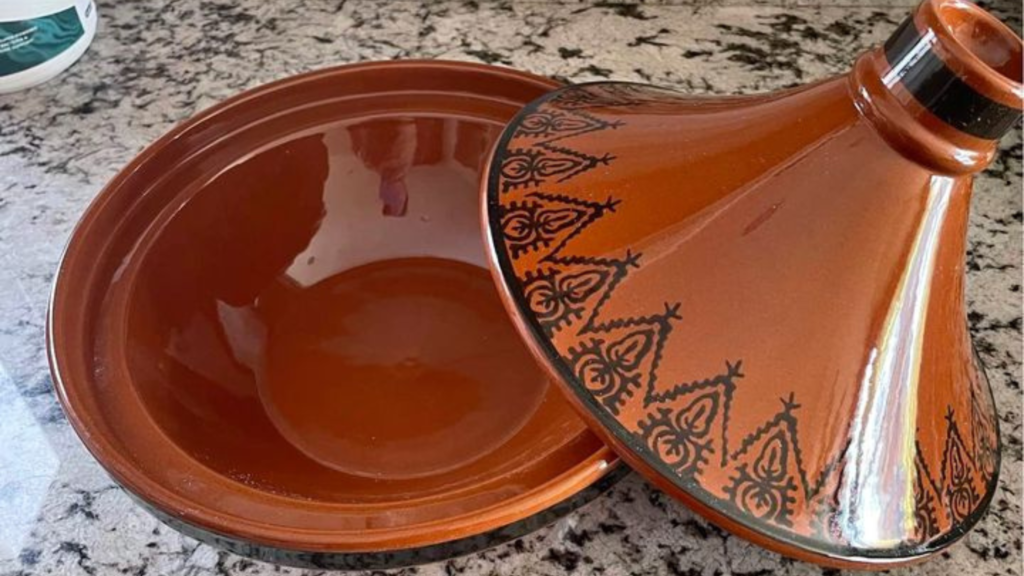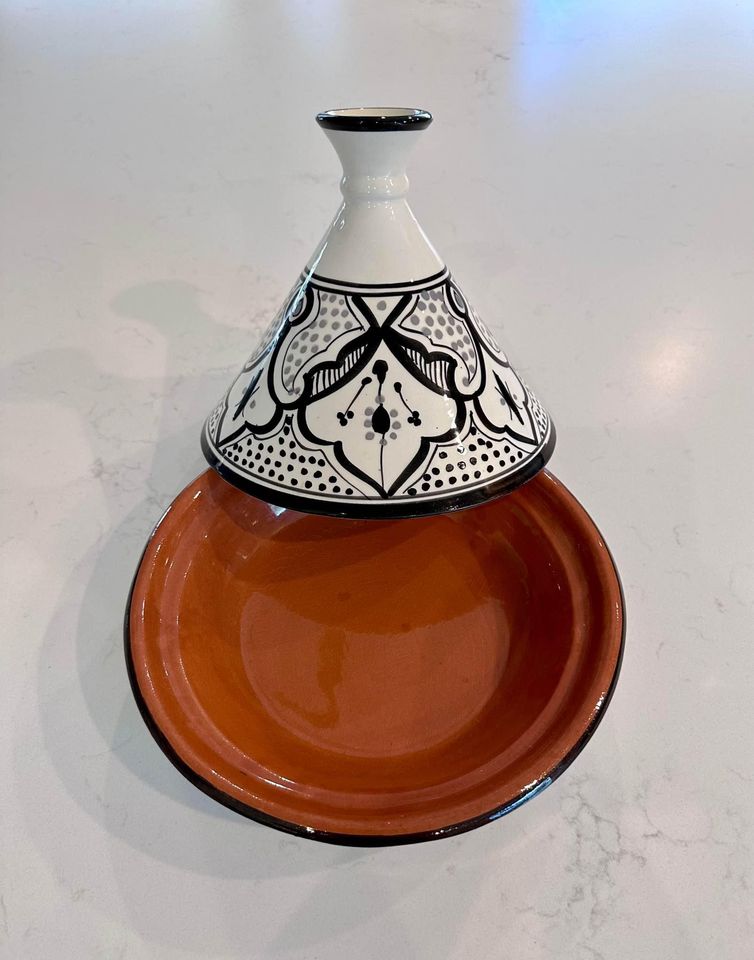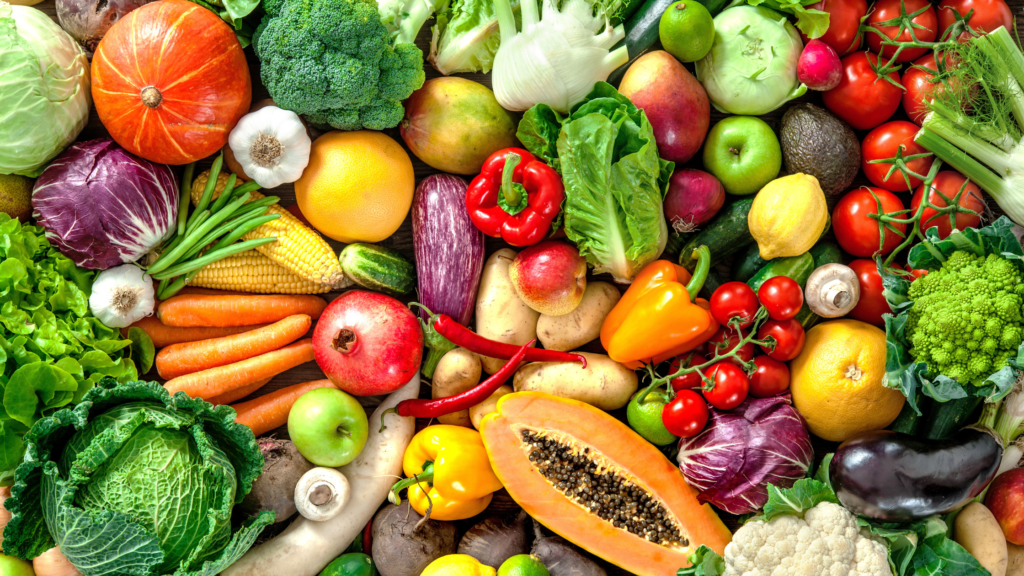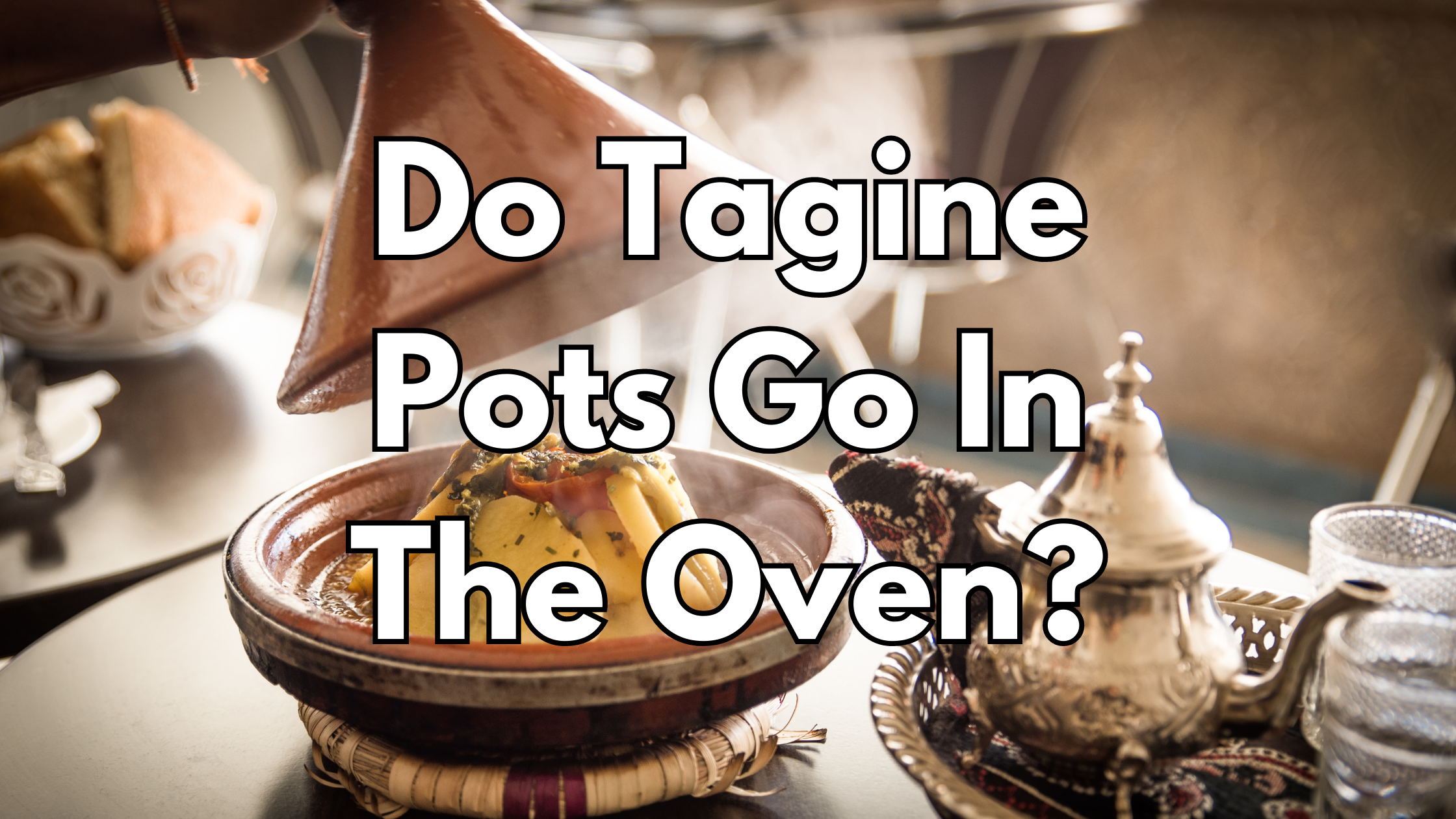Hey there, fellow food enthusiasts!
Today, we’re diving into the delightful world of Tagine pots – those captivating clay vessels that have been delighting taste buds for centuries.
These charming pots have a rich cultural significance, hailing from the beautiful lands of North Africa, especially Morocco.
Now, you might be wondering, why should you even bother with Tagine pots in this era of modern cooking gadgets.
Well, that’s exactly what we’re here to uncover.
Understanding the ins and outs of these enchanting cookware pieces can open up a whole new realm of flavors and culinary possibilities in your kitchen.
In this article, we’ll take you on a journey through the fascinating history of Tagine pots, exploring their traditional uses and the delectable dishes they’ve brought to life.
But, our quest doesn’t end there!
We’ll also venture into the realm of contemporary cooking, discovering how these pots have gracefully adapted to the demands of modern-day kitchens.
Now, the real question we’re here to answer is whether Tagine pots can stand the heat of the oven.
Stay tuned as we unveil the secrets behind using these iconic clay pots in your oven, with helpful tips, delicious recipes, and answers to those burning questions you might have.
So, grab your apron, and let’s embark on this flavor-packed adventure as we learn if Tagine pots can truly go in the oven!
Do Tagine Pots Go In The Oven? (Quick Answer)
Yes, Tagine pots can go in the oven. However, not all Tagine pots are suitable for oven use. It’s important to check the manufacturer’s guidelines and ensure you have an oven-safe Tagine pot before using it in the oven.
Modern variations made from materials like cast iron or ceramic with enamel glaze are generally oven-safe and can handle heat. Be sure to follow the recommended oven temperature and cooking times for the specific recipes you plan to prepare in the Tagine pot.
What is a Tagine Pot?

In the world of cooking, Tagine pots are like a magical fusion of practicality and artistry.
These iconic vessels are traditionally made from clay and feature a unique, conical-shaped lid.
The shape of the lid is where the magic happens, as it allows the steam to condense and circulate within, creating a self-basting effect that results in tender, succulent dishes that burst with flavor.
The history of Tagine pots stretches back centuries, dating back to the nomadic Berber tribes of North Africa.
This ingenious cookware was born out of necessity, as these tribes needed a portable, versatile vessel to prepare delicious meals while on the move.
The Tagine pot quickly became a symbol of culinary heritage and cultural significance, embodying the rich flavors and traditions of Morocco and neighboring regions.
Materials and Construction
To fully appreciate the wonders of a Tagine pot, it’s essential to understand its construction.
Traditionally crafted by skilled artisans, these pots are made from clay sourced from the fertile soils of the Maghreb region.
The clay is shaped and molded into the iconic conical form, ensuring optimal heat retention and even distribution.
The craftsmanship of a Tagine pot is a true art form. The exterior is often adorned with intricate hand-painted designs, showcasing the mastery and creativity of the artisans.
This not only adds a touch of elegance to your kitchen but also serves as a testament to the cultural heritage preserved through generations.
Traditional Uses and Benefits
Tagine pots are culinary workhorses, capable of transforming ordinary ingredients into extraordinary dishes.
The traditional use of Tagine pots involves slow-cooking over low heat, allowing the flavors to meld and intensify, resulting in aromatic, mouthwatering creations that will leave your guests begging for seconds.
The beauty of Tagine pots lies in their versatility.
Not only do they excel at braising succulent meats, such as tender lamb or chicken, but they also work their magic with an array of vegetables and legumes, making them a perfect option for vegetarians and vegans alike.
Moreover, using Tagine pots can be a time-saver too! Since these pots retain heat so effectively, you can let them work their magic while you tend to other tasks.
So, whether you’re hosting a dinner party or simply creating a soul-warming meal for your family, a Tagine pot will never disappoint.
Intrigued yet? We’ve only scratched the surface of this enchanting cookware’s wonders.
Stay with us as we venture deeper into the world of Tagine pots and explore their role in modern kitchens.
Get ready to unlock a whole new level of culinary delights!
Traditional Tagine Pot Usage
Picture this: the crackling flames of an open fire, and a Tagine pot nestled amidst the glowing embers, infusing the air with the irresistible aroma of spices.
Traditional Tagine pot cooking was often done over an open fire, adding a unique smokiness to the dishes that enhanced their flavors.
But fear not, modern-day chefs! With the convenience of stovetops, you can still achieve that signature Tagine pot magic without the need for an open fire.
The conical shape of the pot allows for even heat distribution, whether you’re using a gas or electric stove, ensuring that your culinary creations are nothing short of perfection.
SEE: How To Use a Tagine On a Gas Stove?
Key Features of Traditional Tagine Pot Cooking
What sets traditional Tagine pot cooking apart from other methods is its ability to produce dishes that are tender, aromatic, and packed with depth.
The conical lid of the pot plays a pivotal role in this process, capturing and condensing the steam to ensure the ingredients cook in their own juices.
This gentle, slow-cooking method also allows for the melding of spices and flavors, resulting in dishes that tantalize the taste buds with every bite.
The unique shape of the pot encourages the ingredients to release their juices, creating a rich, luscious sauce that coats every element of the dish.
The beauty of the Tagine pot lies in its ability to bring together a harmonious blend of ingredients, infusing them with the essence of spices and herbs.
The result? An explosion of flavors that will transport you straight to the bustling streets of Marrakech or the serene sands of the Sahara.
Popular Moroccan Recipes and Their Preparation Techniques
When it comes to traditional Tagine pot recipes, Moroccan cuisine takes center stage.
This vibrant North African cuisine offers a treasure trove of delightful dishes that have been perfected over centuries.
One such classic is the “Lamb Tagine with Prunes and Almonds.” In this dish, succulent pieces of lamb are simmered with aromatic spices, dried prunes, and toasted almonds.
The combination of sweet and savory flavors is a culinary dance that will leave your taste buds yearning for more.
For seafood lovers, there’s the “Fish Tagine with Chermoula.”
This delectable dish features tender fish fillets marinated in a zesty Chermoula sauce, made with a blend of garlic, cilantro, cumin, and lemon.
The Tagine pot’s gentle heat ensures that the fish stays tender and juicy, infused with the vibrant flavors of the marinade.
And let’s not forget the vegetarian gem – “Vegetable Tagine with Chickpeas.”
Bursting with colorful veggies, tender chickpeas, and an array of aromatic spices, this dish is a celebration of freshness and flavor.
The Tagine pot gently coaxes out the essence of each ingredient, resulting in a hearty and wholesome dish that will satisfy even the most discerning palate.
With these popular Moroccan recipes, you’ll discover the true magic of the Tagine pot and why it has stood the test of time as a cherished culinary tradition.
But our adventure doesn’t end here! In the next section, we’ll explore how Tagine pots have gracefully evolved to cater to the demands of modern kitchens.
So, hold on to your aprons, and let’s journey on!
Tagine Pots and Modern Kitchens
The Transition from Traditional to Modern Cooking Methods

As the culinary world continues to evolve, so does the way we cook.
With the advent of modern kitchen appliances, some might wonder if the beloved Tagine pot can keep up.
The good news is that this timeless cookware has gracefully adapted to the demands of the 21st-century kitchen.
While the romance of cooking over an open fire hasn’t lost its charm, the convenience of stovetops and ovens has found its place in our busy lives.
Tagine pots have seamlessly made the transition from open flames to the controlled heat of modern stovetops, allowing you to recreate those mouthwatering dishes in the comfort of your kitchen.
People also ask: Does a Tagine Pot Have a Hole in The Top?
The Versatility of Tagine Pots in Contemporary Recipes
Gone are the days when Tagine pots were reserved solely for traditional Moroccan recipes.
Embracing the spirit of globalization, contemporary chefs have explored a wide array of international cuisines that beautifully complement the Tagine pot’s cooking style.
From Indian curries to Middle Eastern stews, and even Mexican-inspired dishes, the Tagine pot proves to be a versatile canvas for your culinary creativity.
Its ability to infuse ingredients with deep, complex flavors makes it the ideal vessel for experimenting with exotic spices and unconventional pairings.
Moreover, the Tagine pot’s ability to retain moisture ensures that even lean cuts of meat stay tender and succulent, making it a chef’s favorite for creating mouthwatering dishes with minimum effort.
Benefits of Using Tagine Pots in the Kitchen
Beyond the artistic charm and delicious results, Tagine pots offer a host of practical benefits that make them a valuable addition to any kitchen.
Their unique conical shape allows for uniform heat distribution, minimizing the risk of hot spots and ensuring that each bite is perfection.
Cooking with a Tagine pot is like a set-it-and-forget-it experience.
Once your ingredients are nestled inside, the pot does the rest of the work, allowing you to focus on other tasks or simply savor the anticipation of your upcoming feast.
In addition to their cooking prowess, Tagine pots serve as stunning table centerpieces.
Their hand-painted designs and captivating shapes make them a feast for the eyes as well as the palate.
So, when you’re entertaining guests, consider bringing your Tagine pot straight from the stove to the table – it’s a guaranteed conversation starter!
Whether you’re a culinary adventurer seeking new flavor frontiers or simply someone who appreciates the artistry of cooking, the Tagine pot has something special to offer.
So, why not add a touch of Moroccan magic to your modern kitchen?
The journey has just begun, and the wonders of the Tagine pot await your culinary exploration!
Can Tagine Pots Go in the Oven?
Factors to Consider Before Using Tagine Pots in the Oven
Now, you might be wondering, can these enchanting Tagine pots really handle the heat of the oven?
The answer lies in understanding a few important factors before you embark on your oven-cooking adventure.
First and foremost, not all Tagine pots are created equal when it comes to oven use.
While some are oven-safe and built to withstand high temperatures, others may not fare as well.
It’s crucial to check the manufacturer’s guidelines and product specifications to ensure your pot is oven-friendly.
Another important consideration is the material of the Tagine pot.
Traditional clay Tagine pots may have limitations when it comes to oven use, as they can be susceptible to cracking under extreme heat.
However, modern variations, like those made from cast iron or ceramic with enamel glaze, are more durable and oven-safe.
Remember, using a Tagine pot in the oven can alter the cooking process compared to stovetop use.
The enclosed space of the oven can lead to different heat distribution and moisture retention, affecting the overall texture and taste of your dish.
So, always be prepared to adjust your cooking techniques accordingly.
Types of Tagine Pots Suitable for Oven Use
If you’re eager to venture into the world of oven-cooked Tagine delights, choosing the right pot is paramount.
Opt for Tagine pots specifically designed for oven use, ensuring they are labeled as oven-safe and can handle the temperatures required for your chosen recipes.
As mentioned earlier, Tagine pots made from materials like cast iron or ceramic with enamel glaze are ideal candidates for oven cooking.
These materials provide better heat retention and are less prone to cracking, making them reliable companions for your oven culinary experiments.
Oven Temperature and Cooking Times for Different Recipes
When you’re ready to fire up the oven and let your Tagine pot work its magic, understanding the right oven temperature and cooking times is essential.
Each recipe may call for specific temperatures and durations, so be sure to follow the guidelines provided in the recipe you’re using.
Generally, a moderate oven temperature between 325°F (160°C) and 375°F (190°C) works well for most Tagine pot recipes.
The slow and steady heat will allow the ingredients to cook thoroughly and meld their flavors, producing a masterpiece that will delight your taste buds.
As for cooking times, Tagine pot recipes often involve slow cooking to achieve the desired tenderness and depth of flavors.
Depending on the ingredients and your chosen recipe, cooking times can vary from one to three hours or even longer.
The wait will undoubtedly be worth it when you taste the marvelous results.
So, with the right considerations and a well-chosen Tagine pot, you’re all set to explore the world of oven-cooked Tagine wonders.
Get ready to savor the fusion of traditional charm and modern convenience, all baked to perfection in your very own kitchen.
The possibilities are endless, and the Tagine pot is eager to work its magic once again!
Tips for Using Tagine Pots in the Oven
Preparing the Tagine Pot for Oven Use

Before you embark on your culinary expedition in the oven, it’s crucial to prepare your Tagine pot for the journey.
Here are some essential tips to ensure a smooth and successful cooking experience:
Seasoning: If you’re using a clay Tagine pot, it’s advisable to season it before its inaugural oven adventure. Submerge the pot in water for a few hours, allowing the clay to absorb the moisture and prevent potential cracking during cooking.
Lid Soak: Don’t forget to soak the conical lid separately, as it will also benefit from absorbing some moisture to enhance the self-basting effect during oven cooking.
Oil Coating: Before placing your ingredients inside, give the Tagine pot a light coating of oil to prevent sticking and facilitate easier cleaning afterward.
Ensuring Proper Heat Distribution and Even Cooking
When cooking with a Tagine pot in the oven, ensuring even heat distribution is key to achieving mouthwatering results.
Follow these tips to master the art of even cooking:
Preheat: Always preheat your oven before placing the Tagine pot inside. This ensures that the pot starts cooking from the moment it enters the oven, promoting uniform heat distribution.
Center Placement: Place the Tagine pot in the center of the oven to allow hot air to circulate evenly around it. Avoid positioning it too close to the oven walls or heating elements, as this can create uneven cooking.
Occasional Stirring: Depending on your recipe, consider giving the ingredients a gentle stir during the cooking process to ensure that all elements receive the love and attention they deserve.
Cleaning and Maintenance After Oven Cooking
Congratulations! You’ve successfully cooked a delectable Tagine dish in the oven. Now, let’s ensure your Tagine pot remains in top-notch condition for future culinary endeavors:
Cooling Down: Allow the Tagine pot to cool down slightly after removing it from the oven. Avoid exposing it to rapid temperature changes, as this can lead to cracks or damage.
Hand Wash Only: To preserve the hand-painted designs and glaze, always hand wash your Tagine pot. Avoid harsh detergents or scouring pads, as they can mar the beautiful exterior.
Avoid Thermal Shock: Never place a hot Tagine pot directly on a cold surface, as this can cause cracking due to thermal shock. Instead, use a trivet or wooden surface to protect the pot and your countertops.
Dry Thoroughly: After washing, ensure the Tagine pot is thoroughly dried before storing it. Moisture trapped inside can damage the pot over time.
By following these tips, your Tagine pot will remain a treasured piece in your culinary arsenal, ready to delight your senses time and time again.
The enchanting journey of oven-cooked Tagine delights doesn’t end here!
In the next section, we’ll tantalize your taste buds with a selection of popular recipes adapted for your oven.
So, keep that appetite ready, and let’s dive into the world of irresistible flavors!
Popular Oven-Based Tagine Recipes
Classic Moroccan Tagine Recipes Adapted for the Oven
Prepare to be transported to the bustling markets and spice-scented alleys of Morocco as we dive into some classic Tagine recipes, perfectly adapted for your oven.
These mouthwatering dishes will not only fill your home with delightful aromas but also introduce your taste buds to the true essence of Moroccan cuisine.
Chicken Tagine with Preserved Lemons and Olives: Tender chicken pieces marinated in a fragrant blend of spices, enhanced with the zing of preserved lemons and the brininess of olives.
Slow-cooked in your Tagine pot, this dish boasts a harmonious dance of flavors that will leave you yearning for more.
Beef Tagine with Prunes and Almonds: Succulent chunks of beef, stewed with sweet prunes and toasted almonds, create a divine combination of textures and tastes.
The gentle oven heat ensures the beef reaches melt-in-your-mouth perfection while allowing the flavors to intermingle for a taste sensation like no other.
Vegetarian and Vegan Options for Oven-Cooked Tagine Dishes

For our vegetarian and vegan friends, the Tagine pot has a treasure trove of options that showcase the magic of plant-based cooking. Prepare to be amazed by the delightful creations that await you:
Vegetable Tagine with Apricots and Chickpeas: A symphony of vibrant veggies, luscious apricots, and hearty chickpeas come together in this stunning Tagine pot medley.
The oven’s gentle touch ensures that each vegetable retains its crunch while absorbing the flavors of the aromatic sauce.
Eggplant and Tomato Tagine with Harissa: Smoky eggplant, juicy tomatoes, and the fiery kick of harissa form the heart of this enticing vegan delight.
Slow cooking in the Tagine pot allows the flavors to harmonize and develop into a culinary masterpiece that will captivate even the most devoted carnivores.
Related: Are Instant Pots Good For Vegetarians?
Exploring International Cuisines with Tagine Pot Oven Recipes
Beyond the borders of Morocco, the Tagine pot invites you to explore a world of international cuisines that complement its unique cooking style:
Indian Lamb Curry Tagine: Experience the fusion of Indian spices and Moroccan cooking techniques with this aromatic lamb curry. Slow-cooked in the Tagine pot, the lamb becomes tender and infused with the rich flavors of cumin, coriander, and other spices.
Mexican Tagine Enchiladas: Transport your taste buds to the vibrant streets of Mexico with this delightful fusion dish. Layers of tender shredded chicken, corn tortillas, and a spicy tomato sauce come together in the Tagine pot, creating a flavor-packed enchilada casserole that will have you coming back for seconds.
The world is your oyster when it comes to Tagine pot oven recipes.
So, don your chef’s hat, embark on a culinary adventure, and let the Tagine pot transport you to gastronomic wonderlands you never thought possible.
With our tantalizing recipes in hand, the time has come to bid farewell. But fear not, for the journey with the Tagine pot has just begun!
Embrace the magic of slow-cooked wonders, experiment with flavors, and let the Tagine pot become your trusted ally in the pursuit of culinary excellence.
Bon appétit, and happy Tagine cooking!
Frequently Asked Questions (FAQs)
Can All Tagine Pots Go in the Oven?
While Tagine pots are designed for slow-cooking wonders, not all of them are created equal when it comes to oven compatibility.
Traditional clay Tagine pots may not fare as well in the oven, as they can be susceptible to cracking due to the extreme temperatures.
However, fear not, as modern variations like those made from cast iron or ceramic with enamel glaze are oven-safe and can handle the heat like a pro.
Always check the manufacturer’s guidelines to ensure your specific Tagine pot is suitable for oven use.
With the right pot in hand, you’ll be ready to embark on your oven-cooked culinary escapades!
Are Tagine Pots Oven-Safe at High Temperatures?
Absolutely! Oven-safe Tagine pots, such as those made from cast iron or enamel-coated ceramic, are built to handle high temperatures.
You can confidently set your oven dial to the desired cooking temperature without worrying about damaging your beloved cookware.
Just remember to follow the manufacturer’s recommended maximum temperature limits, as each Tagine pot may have different heat tolerance levels.
Staying within the specified range ensures that your pot remains in top-notch condition and continues to work its magic for years to come.
Can I Use a Tagine Pot with a Cracked Glaze in the Oven?
Ah, a cautionary tale!
Using a Tagine pot with a cracked glaze in the oven is not advisable.
Cracks can compromise the pot’s structural integrity and lead to further damage during cooking, posing safety risks.
If you spot any cracks in the glaze or on the pot’s surface, it’s best to retire it from oven duty and consider it for decorative purposes only.
Your culinary creations deserve a sturdy and safe vessel, and a cracked Tagine pot won’t deliver the delectable results you desire.
Remember, safety first! Always inspect your Tagine pot before each use and keep an eye out for any signs of damage.
If in doubt, it’s best to err on the side of caution and opt for a pot that’s in pristine condition.
With these FAQs answered, you’re well-equipped to embark on your Tagine pot culinary adventures.
Whether you’re slow-cooking in the oven or simmering on the stovetop, this iconic cookware will continue to be your trusted ally in creating extraordinary dishes that delight the senses.
And so, we bid adieu, but not without leaving you with a parting wish – may your Tagine pot bring you endless joy, tantalizing flavors, and unforgettable culinary experiences.
Happy cooking, dear culinary explorers!
Conclusion
In this flavor-packed journey, we explored the enchanting world of Tagine pots – those captivating clay vessels with a rich cultural significance hailing from Morocco and beyond.
We delved into their history, materials, and traditional uses, uncovering the magic that has made them a cherished culinary tradition for centuries.
As we ventured into the realm of modern kitchens, we discovered how Tagine pots gracefully adapted to contemporary cooking methods, preserving their charm while embracing the convenience of ovens and stovetops alike.
Our exploration of popular oven-based Tagine recipes showcased the pot’s versatility, transcending borders and cuisines to create culinary wonders that captivate the taste buds and elevate the dining experience.
Final Thoughts on Incorporating Tagine Pots in Modern Cooking
As we conclude this culinary adventure, one thing is certain – the Tagine pot is no mere kitchen utensil; it’s an embodiment of artistry, tradition, and flavor.
Whether you’re a seasoned chef or a passionate home cook, incorporating a Tagine pot in your kitchen opens up a world of possibilities, enriching your culinary journey with every dish.
From tender meat stews to vibrant vegetable medleys and aromatic international creations, the Tagine pot invites you to explore and create, infusing your meals with a touch of Moroccan magic.
Explore the Versatility of Tagine Pots in the Oven
So, as you embark on your culinary escapades, let the Tagine pot be your trusted companion, ready to transform your ingredients into culinary masterpieces.
Embrace the charm of slow-cooked wonders, the joy of experimenting with flavors, and the thrill of savoring every delectable bite.
As you explore the versatility of Tagine pots in the oven, remember to choose pots designed for oven use and follow the recommended cooking temperatures and times for each recipe.
Let the gentle heat of the oven work its magic, coaxing out the flavors and creating dishes that will leave a lasting impression on your guests and loved ones.
In the timeless tradition of Moroccan hospitality, we bid you farewell, with a wish that your Tagine pot brings you joy, wonder, and countless culinary triumphs.
May your kitchen be filled with the aromas of spice-laden delights, and may the Tagine pot continue to be your magical companion in the pursuit of delicious memories.
Happy cooking, bon appétit, and may every meal be a delightful adventure!

